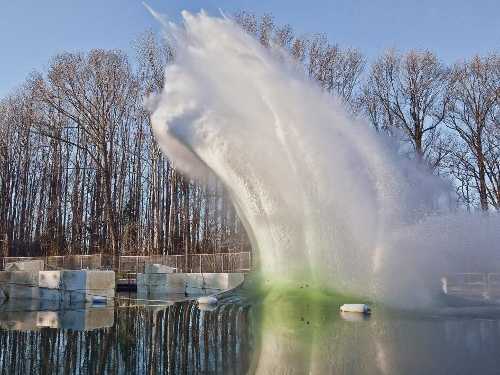Orion, the next deep space exploration vehicle, will carry astronauts into space, provide emergency abort capability, sustain the crew during space travel, and ensure safe re-entry and landing.
Water drop testing on the vehicle, which began in July 2011, simulated different water landing scenarios and took into account different velocities, parachute deployments, entry angles, sea states and wind conditions that Orion could face when landing in the Pacific Ocean.
On Friday the vehicle was put through what represented a worst case landing for an abort scenario in rough seas.
The test impact conditions simulated all parachutes being deployed with a high impact pitch of 43 degrees. The capsule traveled approximately 47 miles per hour before splashing into the basin and rolling over into the Stable 2 position.
This type of landing scenario isn't likely to occur during actual vehicle operation, but is essential for the validation of analytical models.
As was the case with Apollo, the Orion flight design will feature an onboard uprighting system.
Follow Lake County News on Twitter at http://twitter.com/LakeCoNews, on Tumblr at www.lakeconews.tumblr.com, on Google+, on Facebook at www.facebook.com/pages/Lake-County-News/143156775604?ref=mf and on YouTube at www.youtube.com/user/LakeCoNews .
